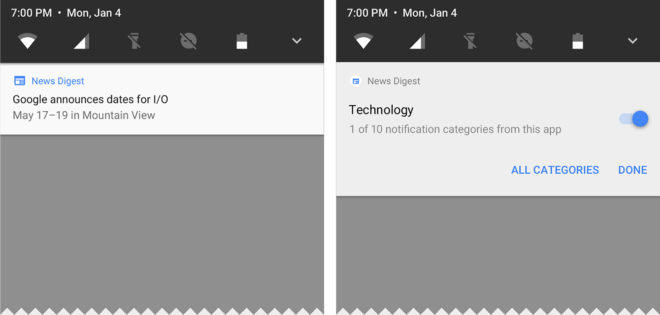Google announces Android O developer preview
![]()
One year after surprising us with an Android N announcement, Google has repeated itself with Android O.
Android O is now official. It’s not surprising that the next major release of Android will be “O” since Google follows the alphabet for its Android updates, but today’s news is significant because Google also revealed some details of Android O.
With O, Google is placing a focus on improving battery life. It’ll do this by putting new automatic limits on app background performance in three areas: implicit broadcasts, background services, and location updates. Google says that these tweaks should make it so that apps “have minimal impact on a user’s device and battery.”

Android O is also bringing notification tweaks. Called “notification channels”, this gives developers more control over different kinds of alerts and also gives users more fine-grained control over the notifications that they see, letting them block or change how each notification channel appears rather than simply blocking all of an app’s notifications.
Other new user-facing features of Android O include picture-in-picture for watching video while you’re performing other tasks, adaptive icons that can change shapes and animate interactions based on what the device wants, and keyboard navigation that includes better “arrow” and “tab” navigation.
Because this is a developer preview, Google has also announced several new dev-focused features of Android O. These include font resources in XML, wide-gamut color for apps, WebView enhancements, and AAudio API for pro audio.
To go along with its announcement, Google is now offering a developer preview of Android O. This update is available for the Pixel, Pixel XL, Pixel C, Nexus 5X, Nexus 6P, and Nexus Player. You’re going to need to download the system image for Android O and sideload it onto your device if you want to try the preview, though. And keep in mind that this is an early preview, so you may want to avoid it unless you’re a developer. If you do want to give Android O a try, maybe load it onto a secondary device.
Google says that it’ll share more details of Android O at its Google I/O conference in May.
Source: Google
